Written by: Susan Theder
Your online presence is so important, so it’s crucial that you are constantly working to improve your SEO rankings. But how do you do this? One way is to perform an SEO audit. This might sound like a daunting task, but it doesn’t have to be.
Performing a quick audit, allows you to optimize in real time so that you can get the most out of your site and uncover any issues that may cause greater problems in the long run. When you do this, this allows you to uncover more long-term projects so that you can drive more site traffic and boost lead generation. This includes:
- Pages that need fresh content
- Tweaks that can improve user experience
- Broken links that can be easily updated to point in the right direction
Today, we’ve got 9 things to check for to make sure your website is up to par and more.
9 Things to Do When Performing an SEO Audit
1. Optimize Your Title Tags
Title tags are the second most important on-page ranking factor as they are the main text that describes your online content in a SERP. There is a correct formula for their homepage title and that is Primary Keyword – Secondary Keyword: Company Name. The reason that advisors optimize their title tags is to boost organic keyword rankings while enticing searchers in the SERP to click on your listing.
A great part of the FMG platform is the dedicated help articles to ensure everything goes smoothly when creating content. Easily find articles that can help you edit title tags, meta descriptions, and more with the FMG knowledge database.
Use Keywords
Using strong keywords in your title tag is crucial as you want Google to rank you higher plus when you include keywords that your niche would be searching for, this greatly narrows the search and allows you to stand out against other financial advisors in the field.
Optimize Title Length Page
Ideally, you should keep your titles short and to the point, as Google starts to cut off titles after 50-60 characters, so ensure you get your point across without being too “wordy.”
2. Make Your Website Mobile-Friendly
Mobile phones are becoming the main way that many advisors interact with their clients, so it only makes sense that your website can load well on a mobile device. According to a study done by the Pew Research Center, 85% of affluent Americans own a smartphone. Of those, 89% use their phones for internet access, 88% for email, and 75% for social networking.
As you can see from the above statistics, it is more important than ever to make sure that your website is mobile-friendly. When someone opens your site on the go, if the website doesn’t size correctly or is hard to read or scroll, then more than likely, you will lose that prospective client to a competitor. Not sure if your website is mobile-friendly? You can easily check this mobile-friendly test to see if your website passes the test. You simply type your website’s URL into the bar and it will quickly tell if your site passes the test.

3. Claim and Optimize Your Google My Business Listing
For a local search strategy, your Google My Business (GMB) listing is your company’s most visible asset. By using this platform, you can choose what Google customers see when they search for your business, while also better understanding what readers and prospects are doing and where they search for your website.
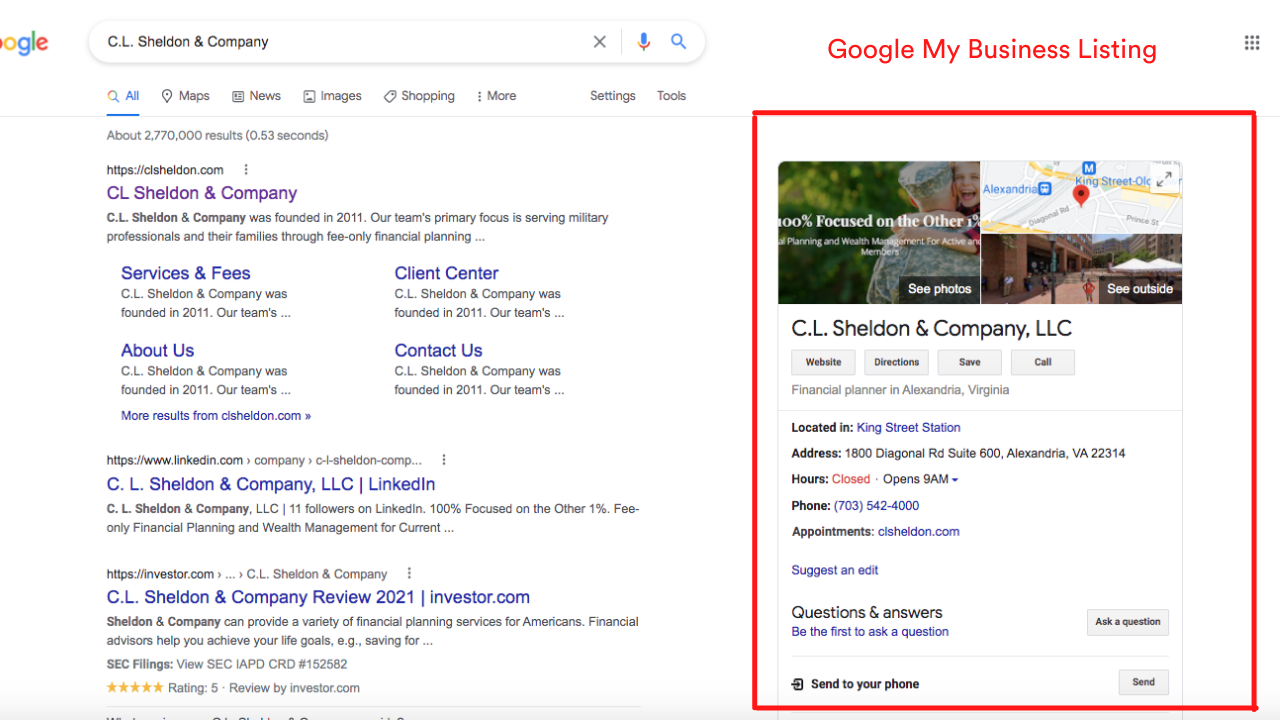
As you can see in the above image, C.L. Sheldon & Company have claimed their Google My Business listing where it shows:
- Company Name
- Address
- Phone Number
- Images
- Google Map
- Hours of Operation
Make sure your NAP Data (Name, Address, Phone Number) is in the footer of every page of your website. When it comes to saving time, it is better if you can add it once and have the footer automatically applied to each page as you add them. That same NAP data should match your third-party pages. This includes:
- Chamber of Commerce
- Yelp
- Google My Business
- Other Local Listings
Another thing to keep in mind is that if you spell SUITE, don’t shorten it to Ste. somewhere else. It needs to be kept consistent throughout your entire website.
4. Submit Your Sitemap To Google
Google Search Console makes this easy, and it is important to do so to ensure google can index all your pages so they appear in search results. Sitemaps are an important tool to help get your site discovered by search engines. And adding a sitemap to Google’s Search Console can improve indexing for your site.
You can do this by following the 6 simple steps below.
- Sign in to Google Search Console.
- In the sidebar, select your website.
- Click on ‘Sitemaps’. This menu is under the ‘Index’ section. …
- Remove outdated or invalid sitemaps (if any) like sitemap.xml.
- Enter ‘sitemap_index. …
- Click Submit
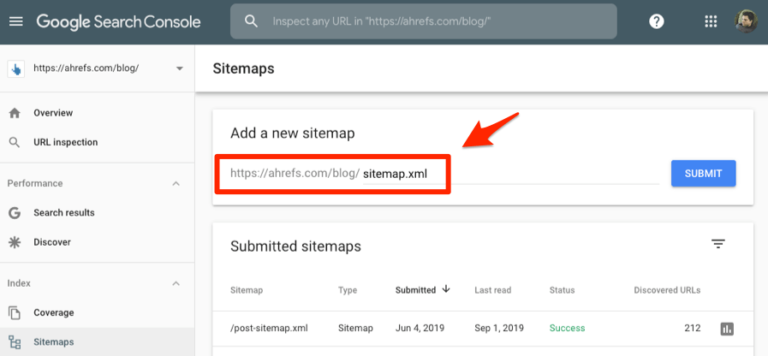
Submitting your sitemap to Google definitely helps your strategy, as Google updates its algorithms sometimes in order to obtain the most relevant searches for your keywords. Once Google has made an update, it is a good idea to re-submit your sitemap to Google. However, we may not always know when Google does update its algorithms so you should also consider re-submitting your sitemap if you add, remove, or change large amounts of content on your site.
5. Improve Your On-Page SEO
SEO is an important tool in every financial advisor’s arsenal so it’s crucial to make use of it. When performing an audit, it’s key to ensure that your on-page SEO is optimized. One tip to take note of if time is of the essence is that not every page needs to be optimized, just the most important ones. The first thing you need to figure out is what are your five most important pages. These pages usually:
- Contain or target certain important keywords
- Have less traction than they used to
- Currently rank well but with some work could be even more impactful
From there, use your SEO improvement strategies and make those pages really stand out. Having good on-page SEO helps rank your site better in Google search results and can help bring more visitors to your site. FMG even makes it easy to improve on-page SEO by providing a suite of SEO tools that’ll not only help you impress visitors but also stand out in search results.
6. Make Your Content the Best It Can Be
Content is the driving force of any advisor’s website. If your site is bare and featured boring or weak content then it’ll be pretty much impossible to make effective use of SEO. Work on making your content more interesting and educational. The more effort you put into crafting quality content the better you’ll rank due to the effective use of SEO.
When creating content remember to use:
- Short and sweet intros
- Small skimmable paragraphs
- Lots of subheaders
- Visuals, images, and videos
The better your content is, the more attention it’ll get from Google search algorithms. Be sure to make use of all your best SEO strategies to ensure your content uses the correct keywords to help you rank high. And never fear running out of content as FMG’s content library is always expanding. Providing authentic, timely emails, social posts, market commentaries, videos, blogs, lead generation, and more. Even more, you can use them as is or edit them to your heart’s content with the built-in visual editor.
7. Ensure Your Site Uses HTTPS
All websites have an address that can be seen in the URL section of the browser. To make sure your site is secure, make sure your site is set up as an HTTPS and not just an HTTP. That “S” stands for “Transport Layer Security” and adds a layer of cybersecurity for anyone visiting your site.

8. Fix Any Broken Internal Links
Broken links are a good way to worsen a user’s site experience. Imagine clicking on a link and being taken to an error, it never looks good, especially for people who might be potential clients. It also sends a negative quality signal to search engines which can lower your ranking.
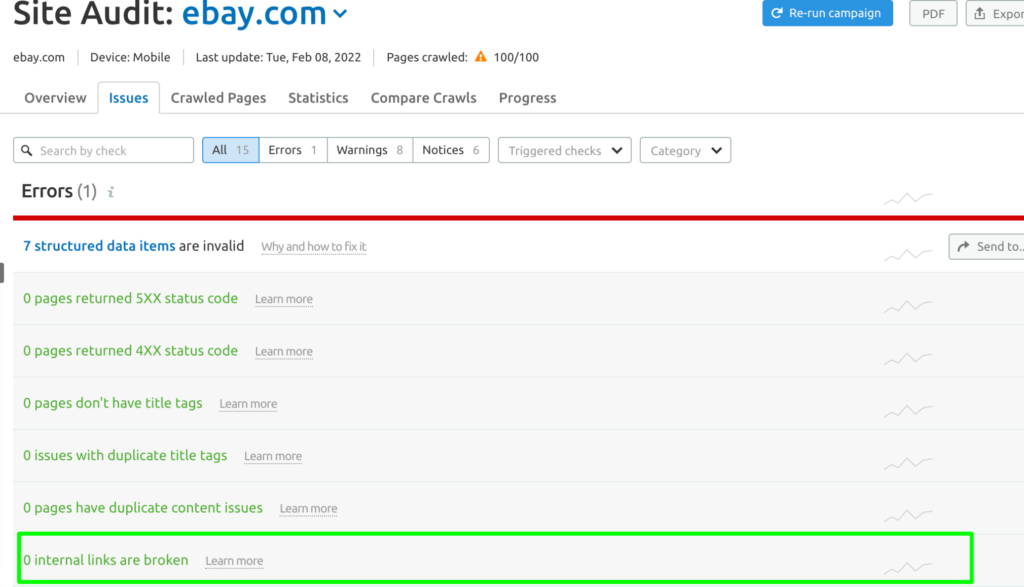
Use your site audit report with whatever program you use to analyze your site and you’ll be shown any broken internal links. From there it’s very simple, either update the links to the correct URL or remove them entirely.
A great way to fix any 404 issues is to use the Google Search Console and check the dashboard for the coverage section.
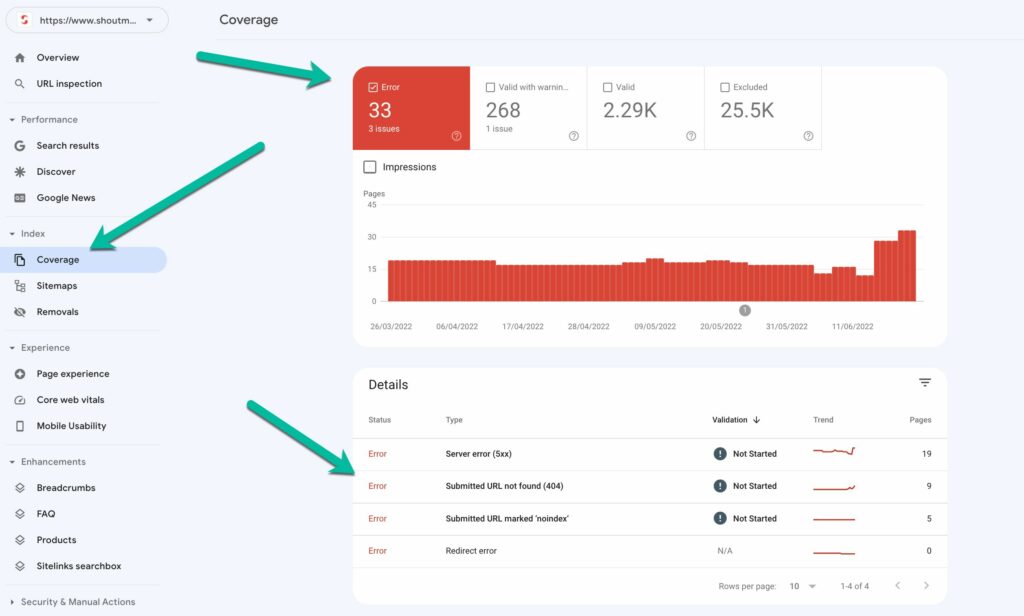
From there, click the error and it’ll show you what pages came up with a 404 issue. Once you’ve found the pesky links giving you issues, you’re free to edit those and let Google recrawl your blog.
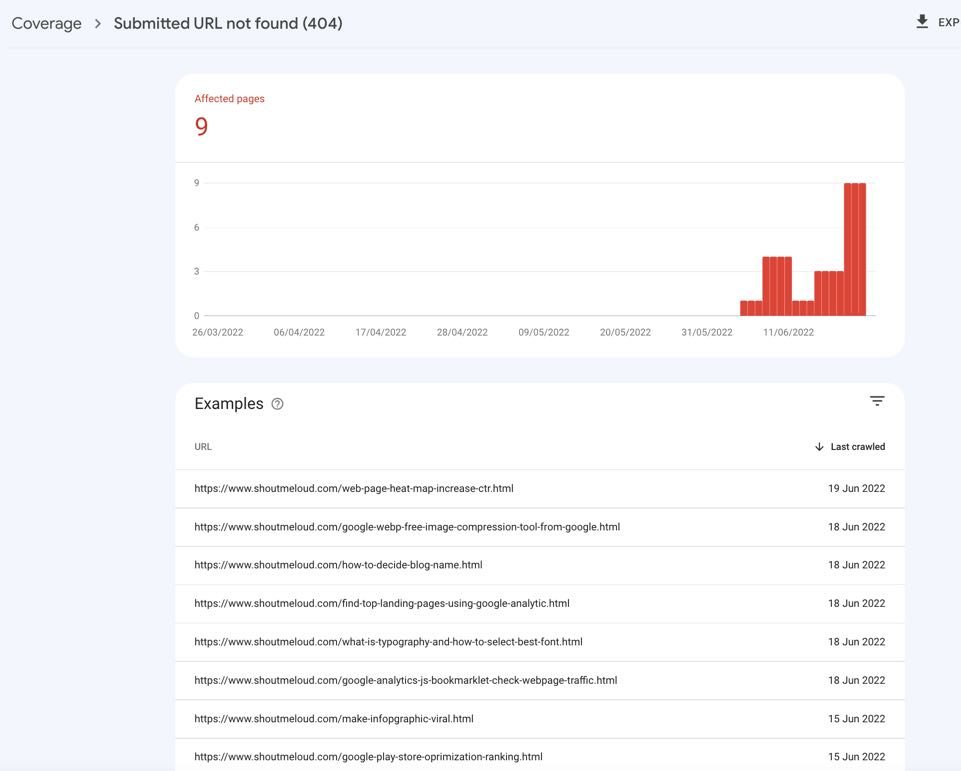
Use FMG Redirects to Fix Broken Links
Use FMG’s redirect tool to redirect old or error URLs to your current website. For more information on redirects check out this article.
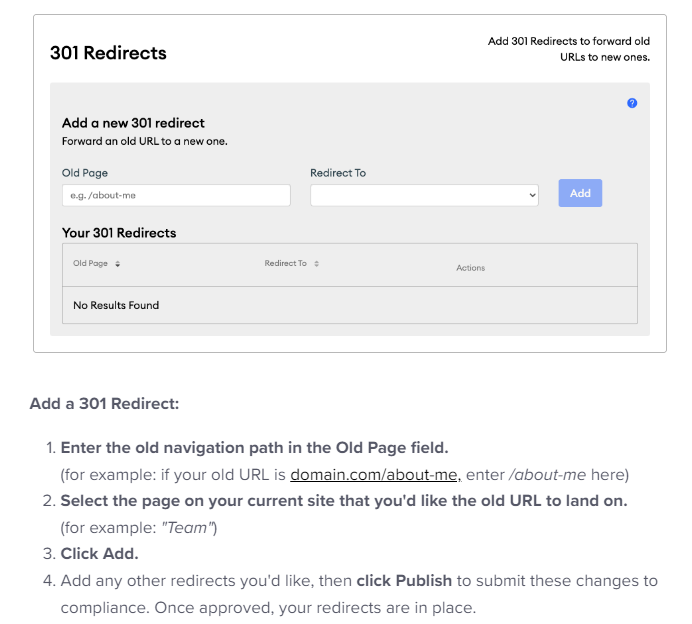
9. Find and Resolve Duplicate Content Errors
Another ranking signal that some people may miss is the issue of duplicate content. This is due to duplicated content sending mixed signals to search engines and confusing them by making them question which page should rank. At worst, it can also be seen as an attempt to manipulate the rankings.
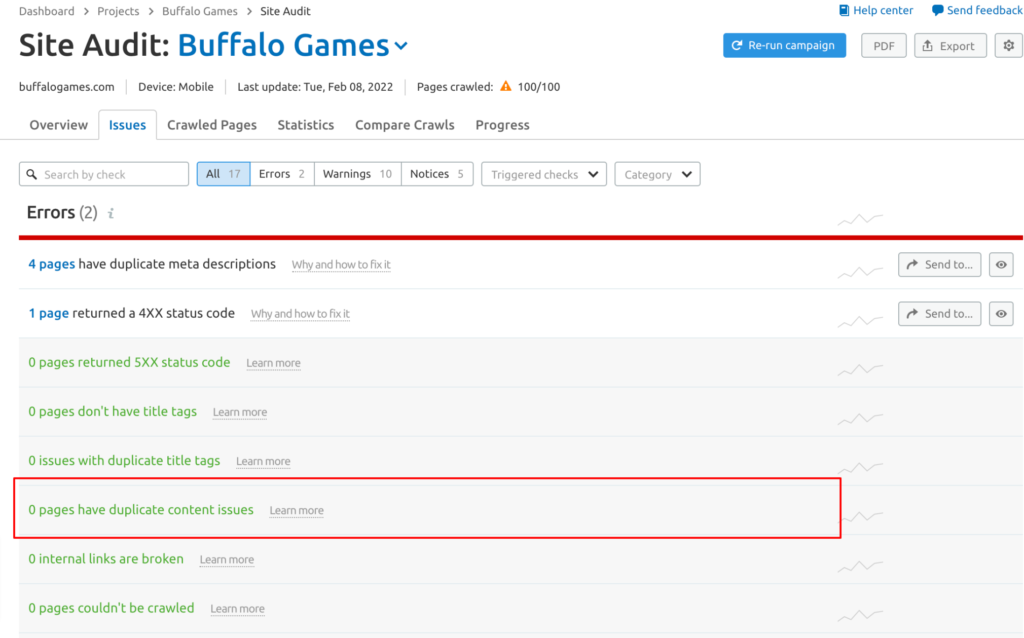
Much like with the internal links issue, this can be solved by running an analysis of your site and seeing which if any, pages have duplication issues. From there, simply reword the content until the issue is solved.
How to Check For Duplicated Content Using Google
First, you need to search this site:insights.fmgsuite.com (keyword) on Google replacing the site URL with your own and then a keyword of your choosing.
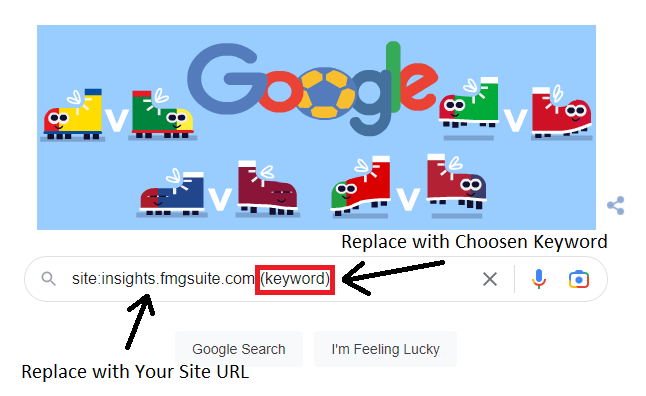
Once you’ve entered that search. Take a look at the results and make sure none of the links are duplicates. Usually based on the title of the content, ensure that there are no copied titles using the keyword. If you find one, simply go to the article and edit the title.
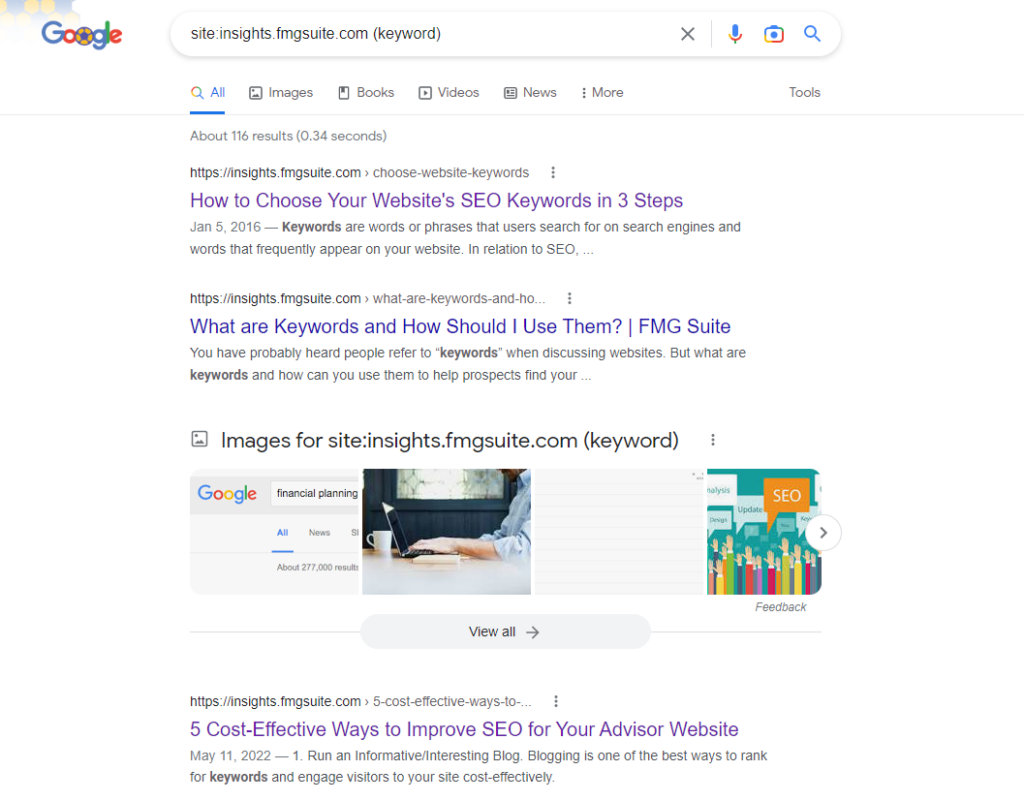
Related: Why Advisors Should Use a Visual-First Marketing Strategy (And How to Create One)

